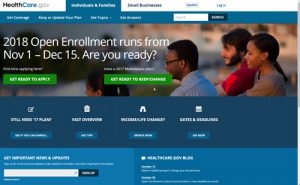The Department of Health and Human Services (HHS) has issued a report “on qualified health plans (QHPs) available in the Exchange for states that use the HealthCare.gov platform, including estimates for issuer participation, health plan options, premiums, and subsidies in the upcoming open enrollment period (OEP), and trends since the first OEP.”
In a nutshell, premiums are up on average 37 percent, while the total number of insurance companies participating has fallen to 132 from 167 during last year’s open enrollment. (The highest level — 217 — was reached in 2015.) The good news is that subsidies will also rise on average to $555 per month from $382, thereby offsetting the premium increase for those who qualify for subsidies.
The report, titled “Health Plan Choice and Premiums in the 2018 Federal Health Insurance Exchange,” was issued before open enrollment commenced yesterday.
Eight states in will have only one issuer according to the report: Alaska, Delaware, Iowa, Mississippi, Nebraska, Oklahoma, South Carolina, and Wyoming. In fact, 29% of current enrollees will have only one issuer to choose from, up from 20% previously.
Since the marketplace opened in 2014, the average number of state issues has fallen from five to this year’s three. Likewise, the average number of QHPs available to enrollees has decreased every year since 2015 (55), with 46 in 2016, 30 in 2017, and 25 in 2018.
This year’s open enrollment has been truncated from 90 to 45 days and will close on Dec. 15 rather than Jan. 31, as it has previously. A bipartisan bill in the Senate that would extend the enrollment until the traditional cutoff date and would also restore cost-sharing reduction (CSR) payments to insurers is stalled. lt may resurface in a final budget reconciliation bill in December.
Earlier efforts to “repeal and replace Obamacare” have come up short in Congress, the last time by one vote in the Senate.

